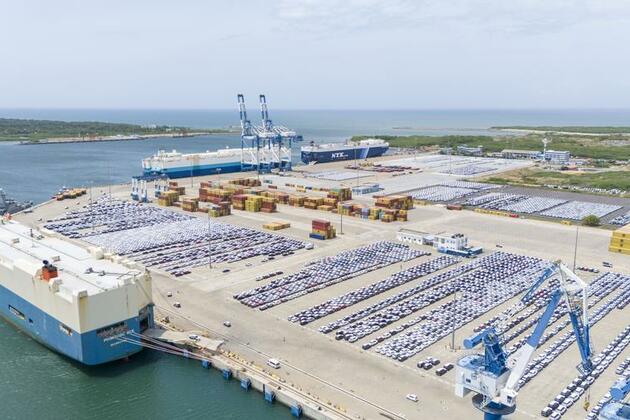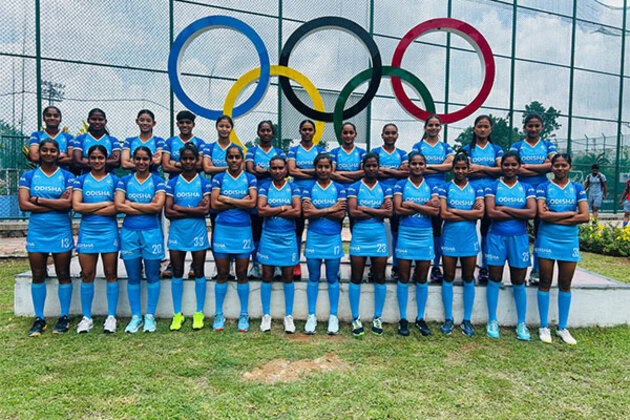What precious stones are found in Russia
RBTH
17 May 2022, 02:25 GMT+10
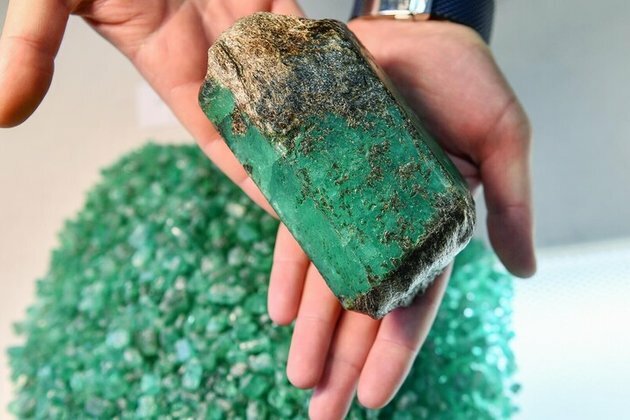
The Ural Mountains and Siberia are veritable Russian treasure troves, where a startling variety of minerals are mined, before being turned into masterpieces of jewelry.
Ural emeralds, Yakut diamonds and numerous other precious stones are valued all over the world. Both areas are also famous for the mining of gemstones - less valuable, but just as beautiful and revered.
1. Diamond
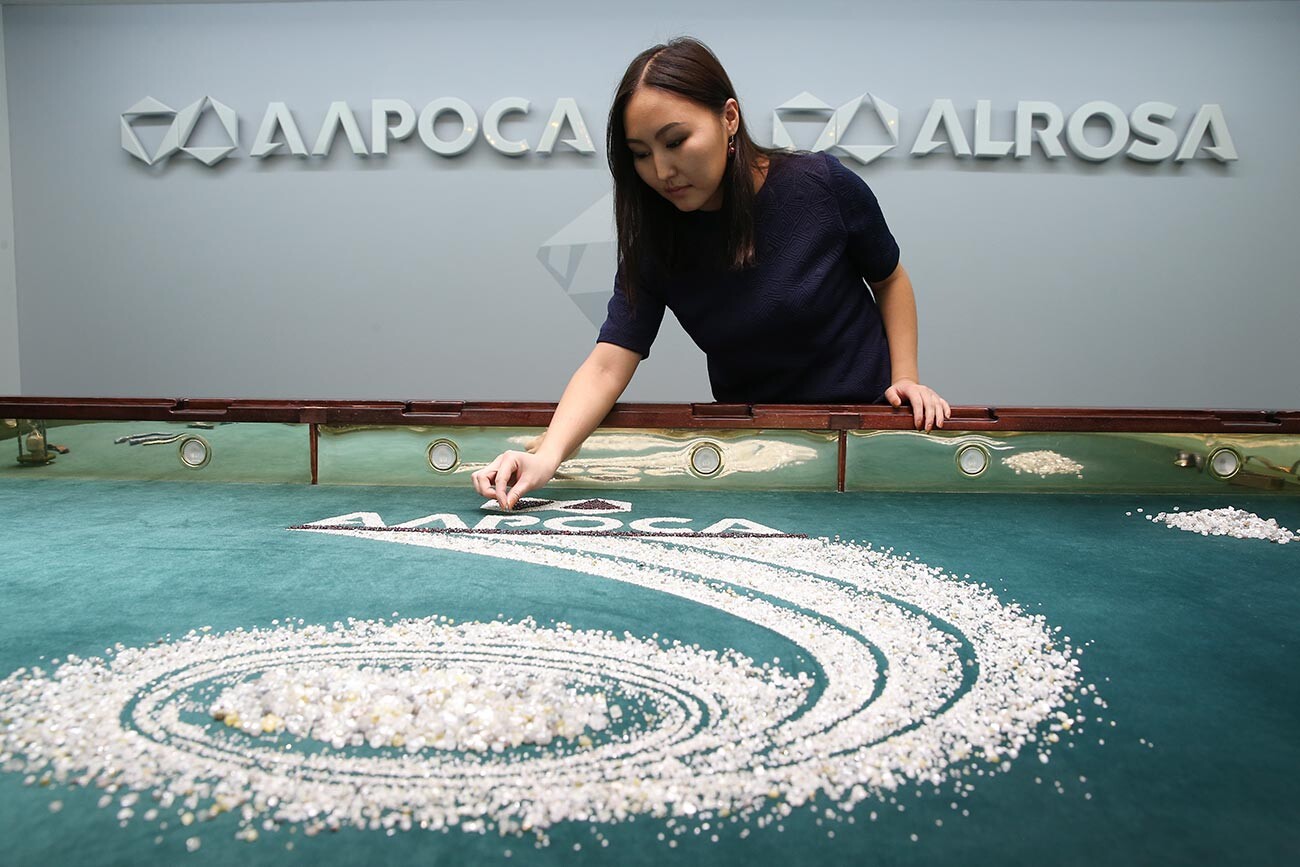
Yakut diamonds near the Mirny mine, 2017.
Alexander Ryumin/TASS
Yakut diamonds are famous the world over today, although, until the mid-20th century, the stone was only mined in India, Brazil and Africa. Russian geologists had known for a long time that Russia's coldest region was home to diamond mines, with finds being documented back in the 19th century. Digging, however, didn't start until the 1930s. Finally, in 1954, the first kimberlite pipe was opened in Yakutia. Others soon followed (By the way, the discovery of diamond mines is being credited to women - Soviet geologists Larisa Popugayeva and Nataliya Sarsadskikh).
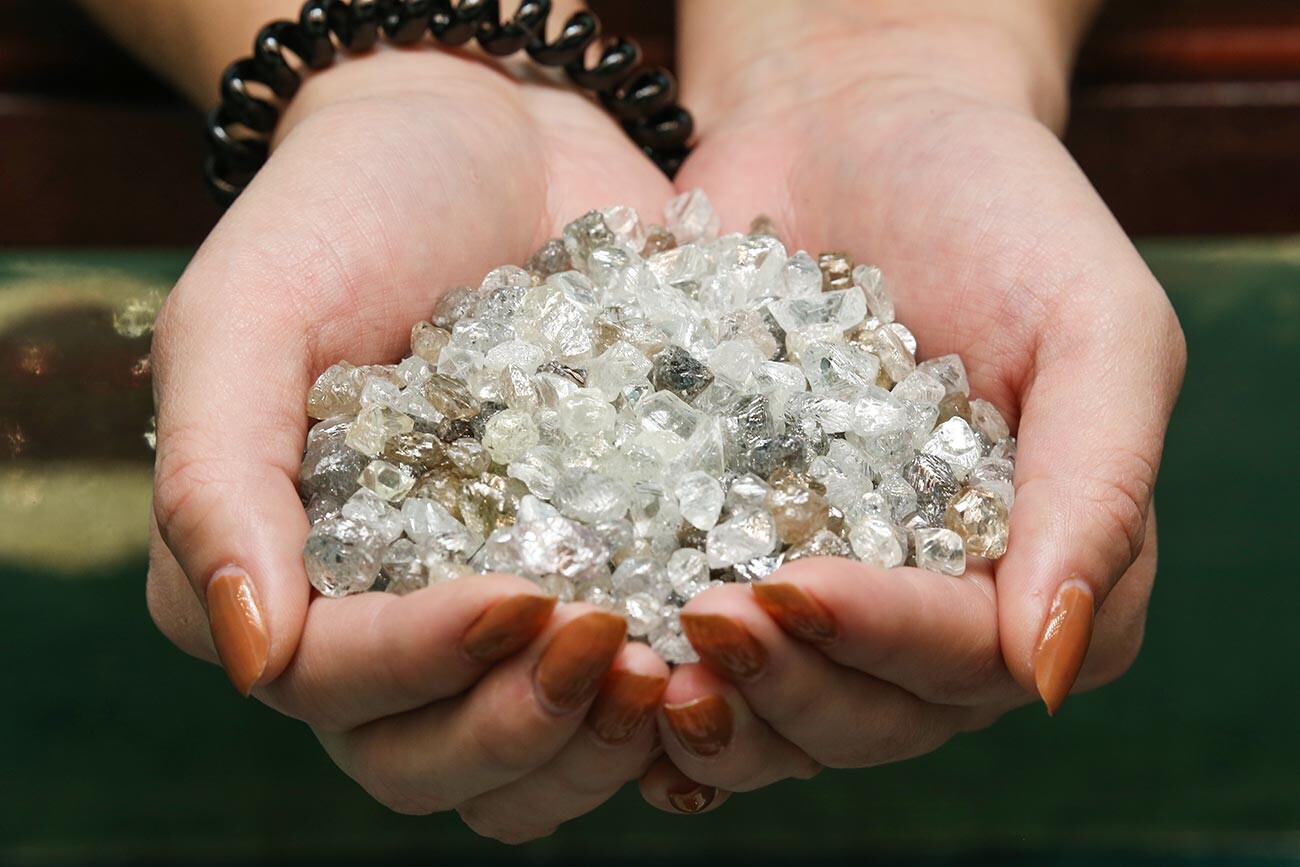
Yakut diamonds, Mirny.
Alexander Ryumin/TASS
At different times, diamonds were discovered in the Perm (the Ural Mountains) and Arkhangelsk regions (the Russian North), however, industrial mining is still done in Yakutia. There's also the concept of the "Russian cut", which appeared in the 1970s, due to strict Soviet processing standards. It applies not only to Russian-made stones, but all stones with the highest quality cuts are used. They are on average about ten percent more expensive than the rest.
2. Emerald

Urals emeralds.
Donat Sorokin/TASS
The only emerald mine in Russia is actually the largest in all of Europe - the Mariinsky Mine (also sometimes known as the Malyshev Mine, as it was called in Soviet times) is located in Sverdlovsk Region in the Ural. Mining started in the 1830s, with large-scale work beginning in the 1920s. Aside from emeralds, geologists were also interested in beryls - not for the purposes of making jewelry, however, but for extracting beryllium oxide, used in military technologies. Today, the Ural yields some 150 kilograms of emeralds annually, all of them of top quality and with a distinct yellow shade. Some of them are humongous in size, such as the one discovered in 2019, weighing a staggering 1.6 kg, and another one in the previous year, coming in at 1.54 kg.
3. Alexandrite
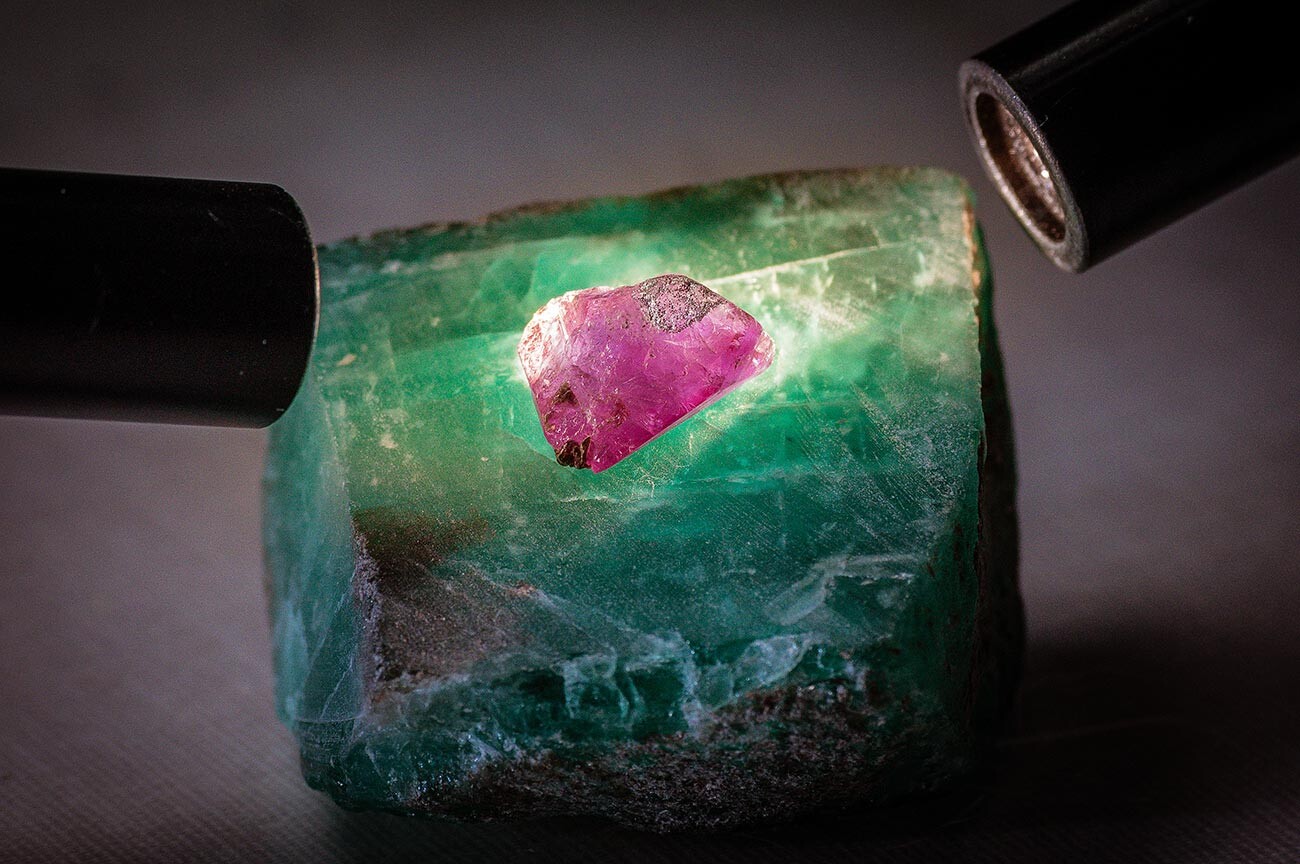
Alexander Rudny (CC BY 4.0)
Aside from emeralds and berylls, the Mariinsky Mine yields about five kilograms of alexandrite a year. The stone was discovered during the search for gemstones in the Ural and, initially, geologists mistook it for a low-quality emerald. However, after studying it closer, they realized that it was a completely new, hitherto unknown precious stone.
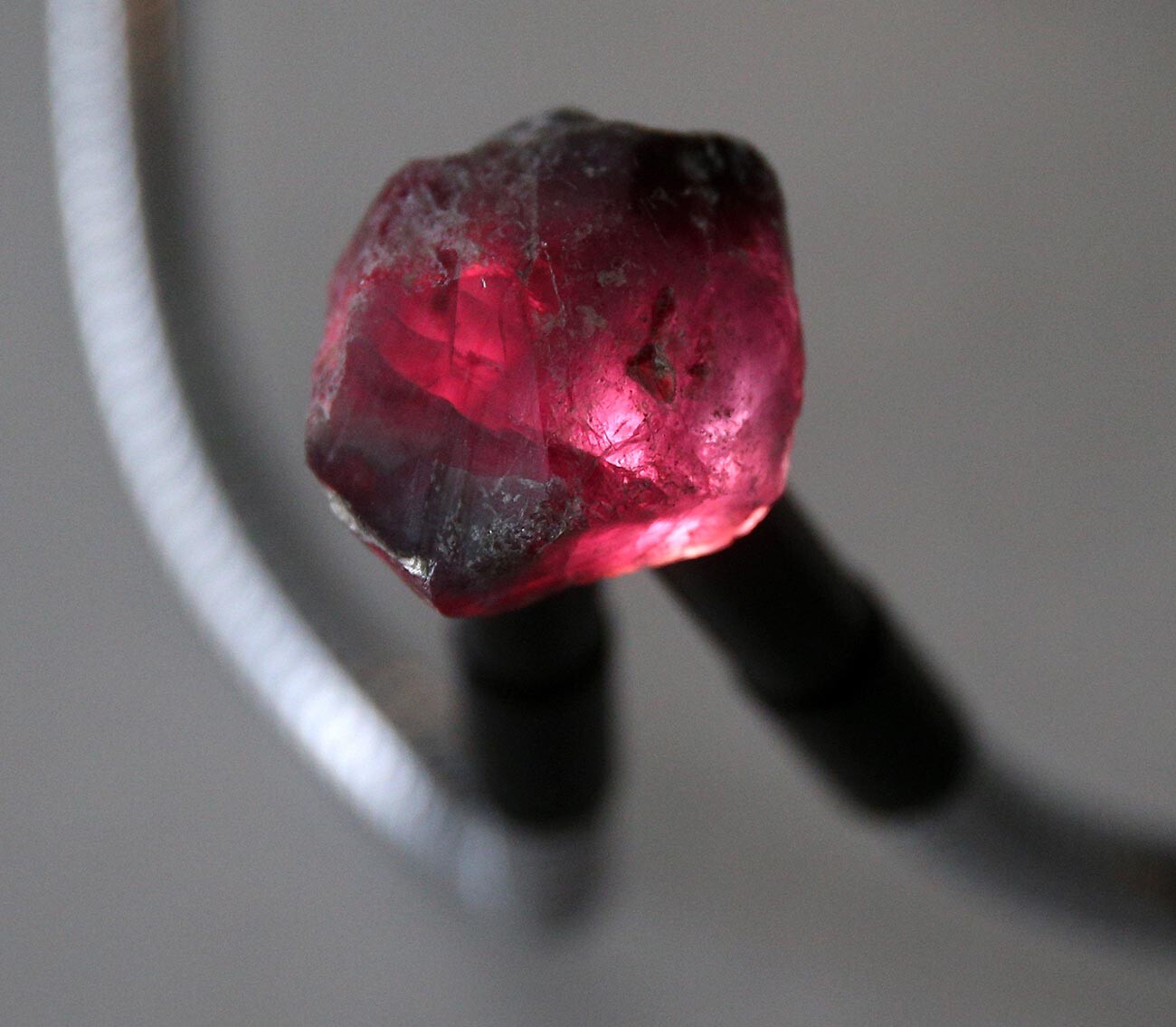
Alexandrite from the Mariinsky Mine.
Yegor Aleyev/TASS
The find sparkles like an emerald, but changes its color according to lighting conditions - imagine that! Its shades sometimes include green, red and violet. It was named after Russian emperor Alexander II in 1834 and quickly became popular with the Royals and noble elites. Aside from the Ural, the stone is also found in Tanzania and Madagascar.
4. Garnet
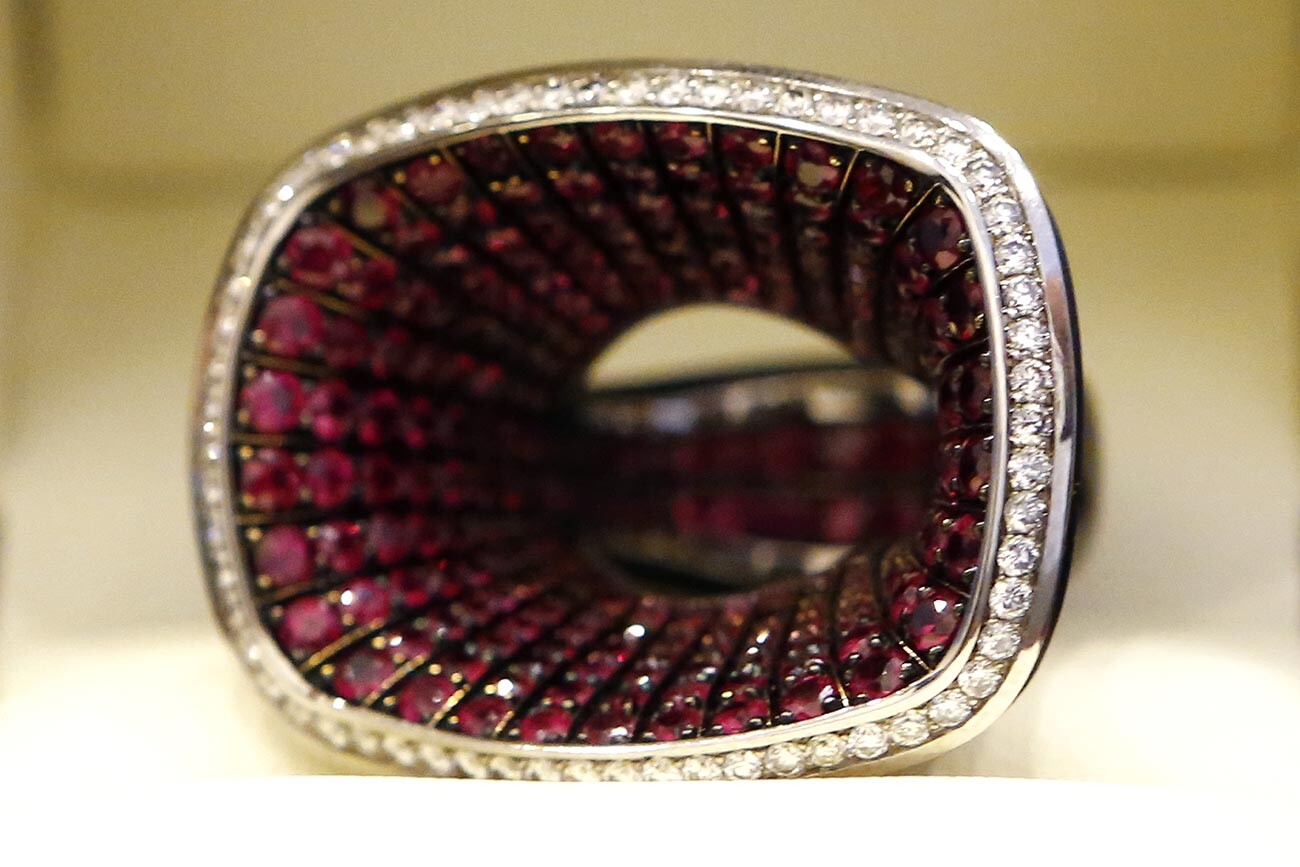
Oleg Smyslov/Sputnik
This is an incredibly beautiful, semi-transparent stone, famous in Russia at least since the 16th century, when it used to be imported from Bohemia (now the Czech Republic). In the mid-19th century, several types of garnet (including the extremely rare green ones) were discovered in the Urals, on the shores of Lake Ladoga and the Kola Peninsula.
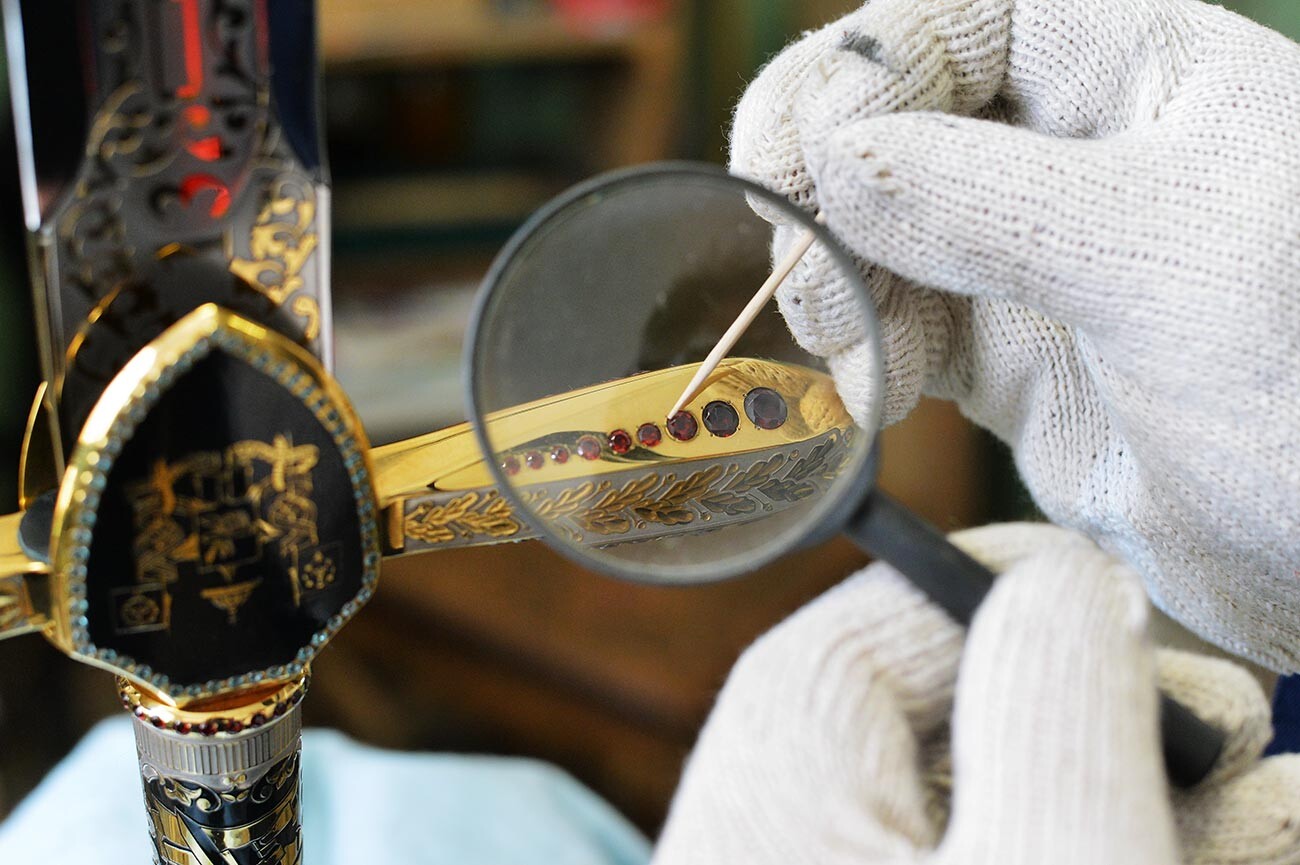
Alexander Kondratuk/Sputnik
Today, garnet is mined in Eastern and Southern Siberia, as well as Karelia. It is one of the most popular and, at the same time, least expensive stones used in jewelry.
5. Amethyst
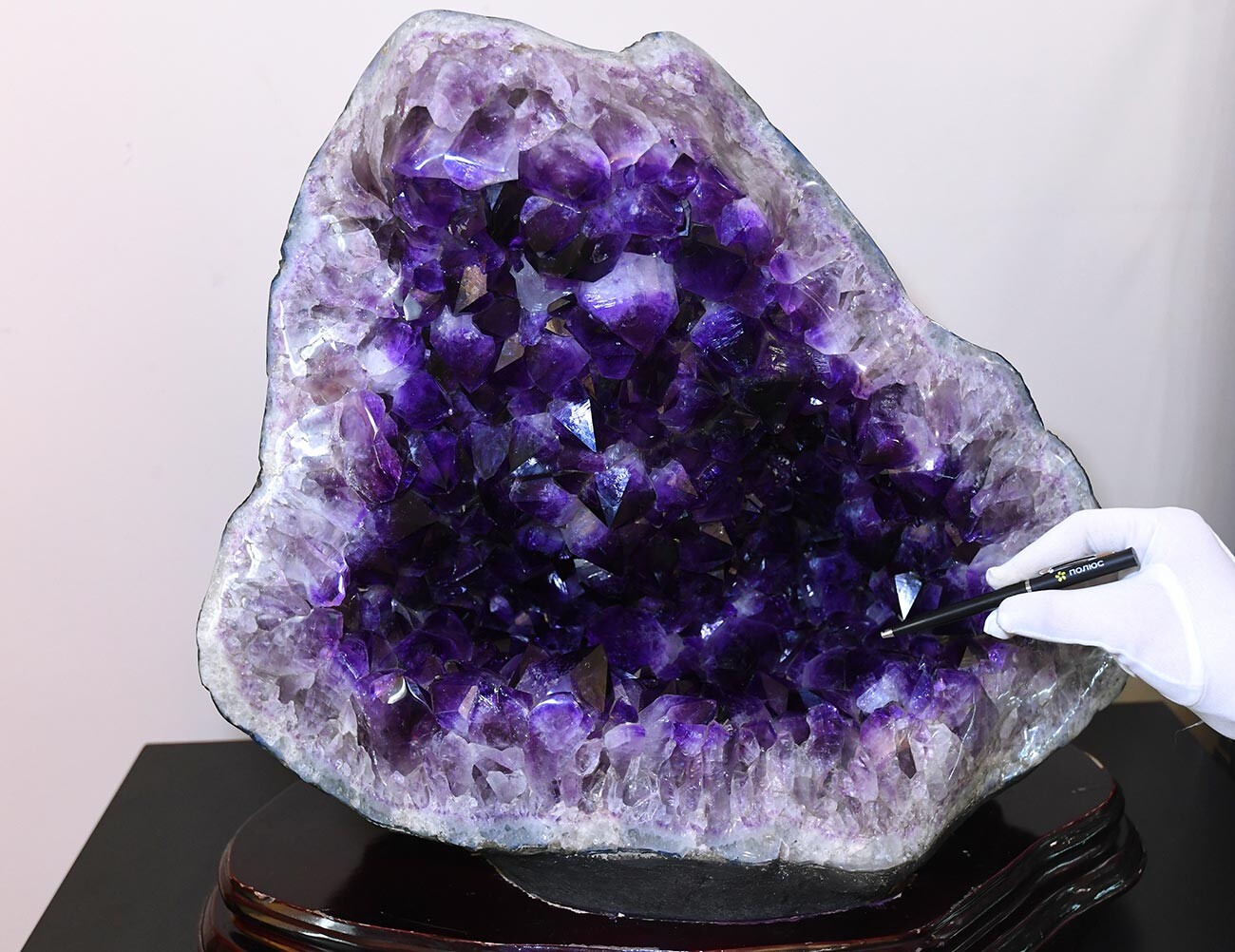
Siberian amethysts.
Ilya Naimushin/Sputnik
Amethysts exhibiting a dark-violet shade are referred to as "Deep Siberian" (sometimes "Deep Russian") and are considered rare semi-precious stones, which earns them a spot in jewelry making. They are found in the Urals, Siberia and Karelia. Pink amethysts are referred to as 'Rose de France' and are encountered more often in nature.
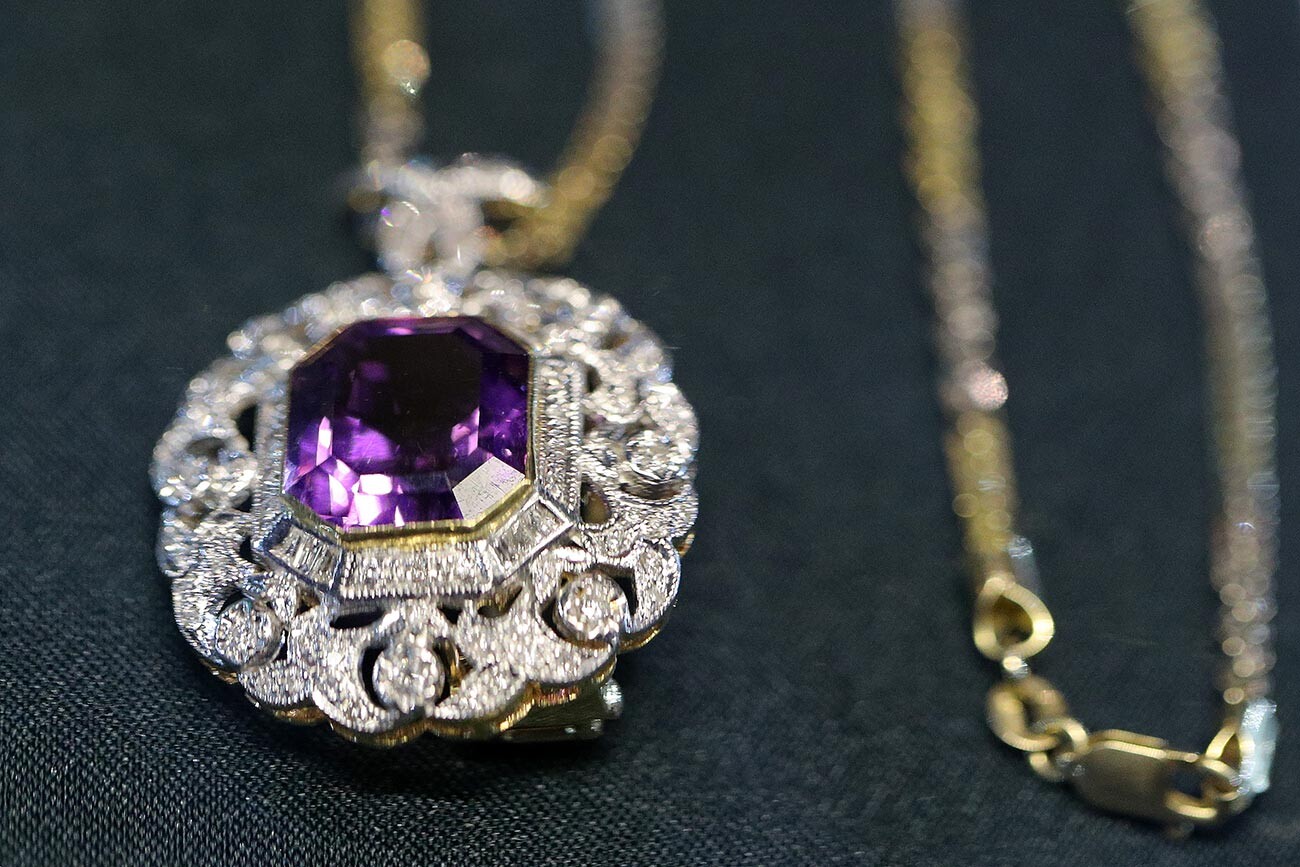
This necklace with amethyst belonged to the popular Russian folk singer Ludmila Zykina.
Gavriil Grigorov/TASS
The Kola peninsula is known for one of the oldest natural sources of the stone in the world, discovered in the 16th century - Cape Korabl (about 300 km from Murmansk), where this silicate can be found right in the cracks of the rocky shores of the White Sea. Beautiful, isn't it?
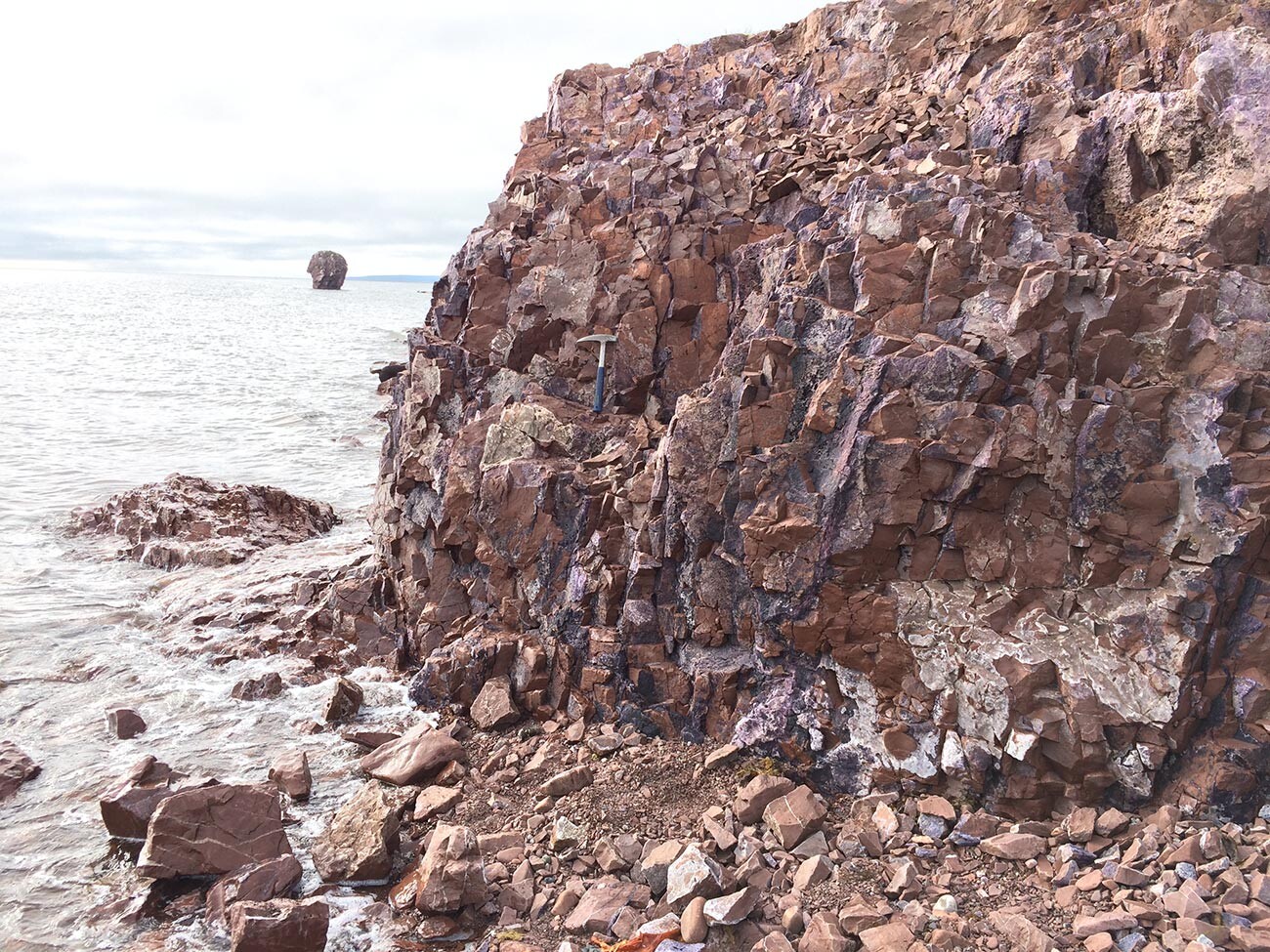
The rock with amethysts.
Ivtorov (CC BY-SA 4.0)
6. Spinel
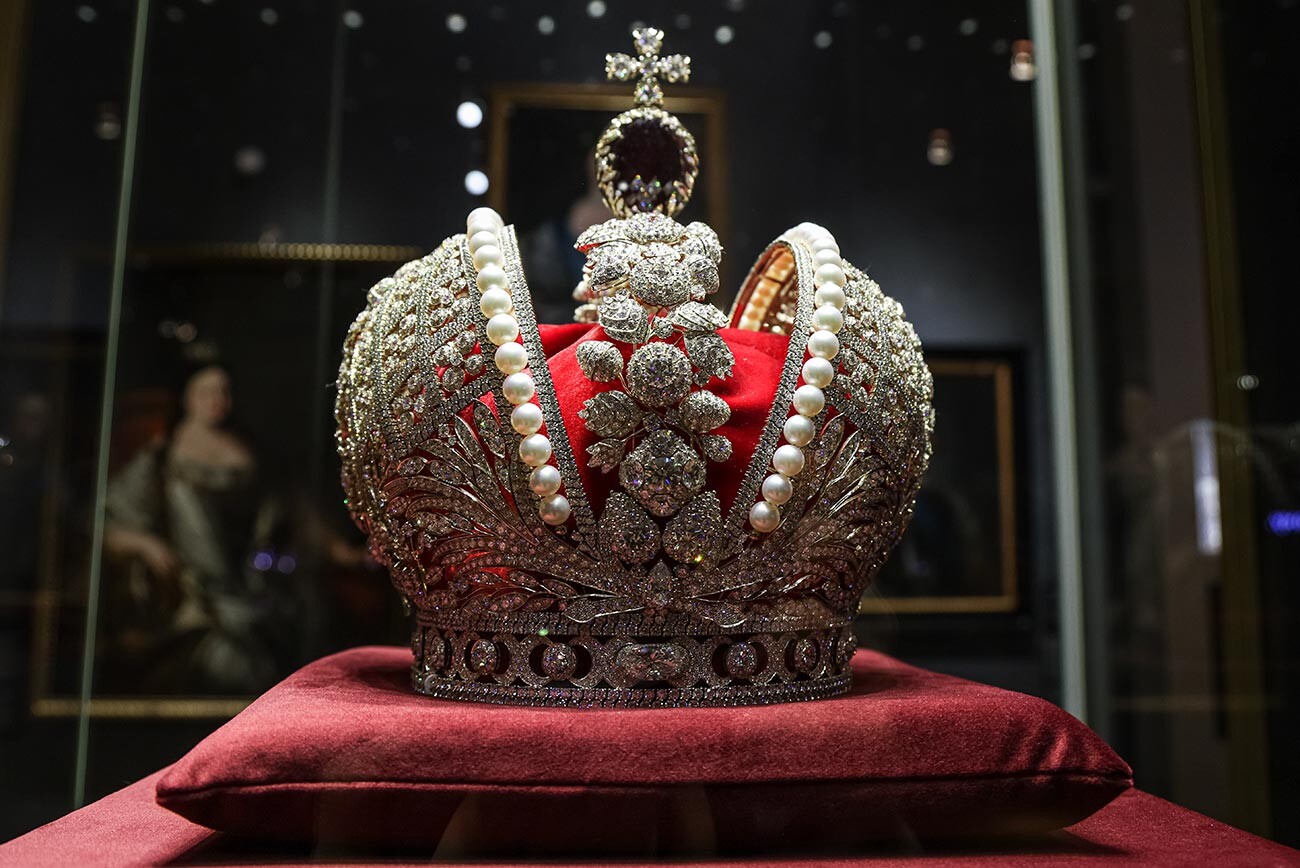
Great Imperial Crown of Russia with spinel.
Stanislav Krasilnikov/TASS
Back in the days of old, Slavs used to refer to precious red stones as lal, which means "red". This included rubies and corundums, as well. However, more often than not, spinel was implied. This stone remains on the imperial regalia of the Romanov Dynasty: it adorns the crown of the Russian Empire, silver earrings and the bow clasp; although the particular stones are of foreign origin and, until the 18th century, spinel was considered virtually indistinguishable from rubies.
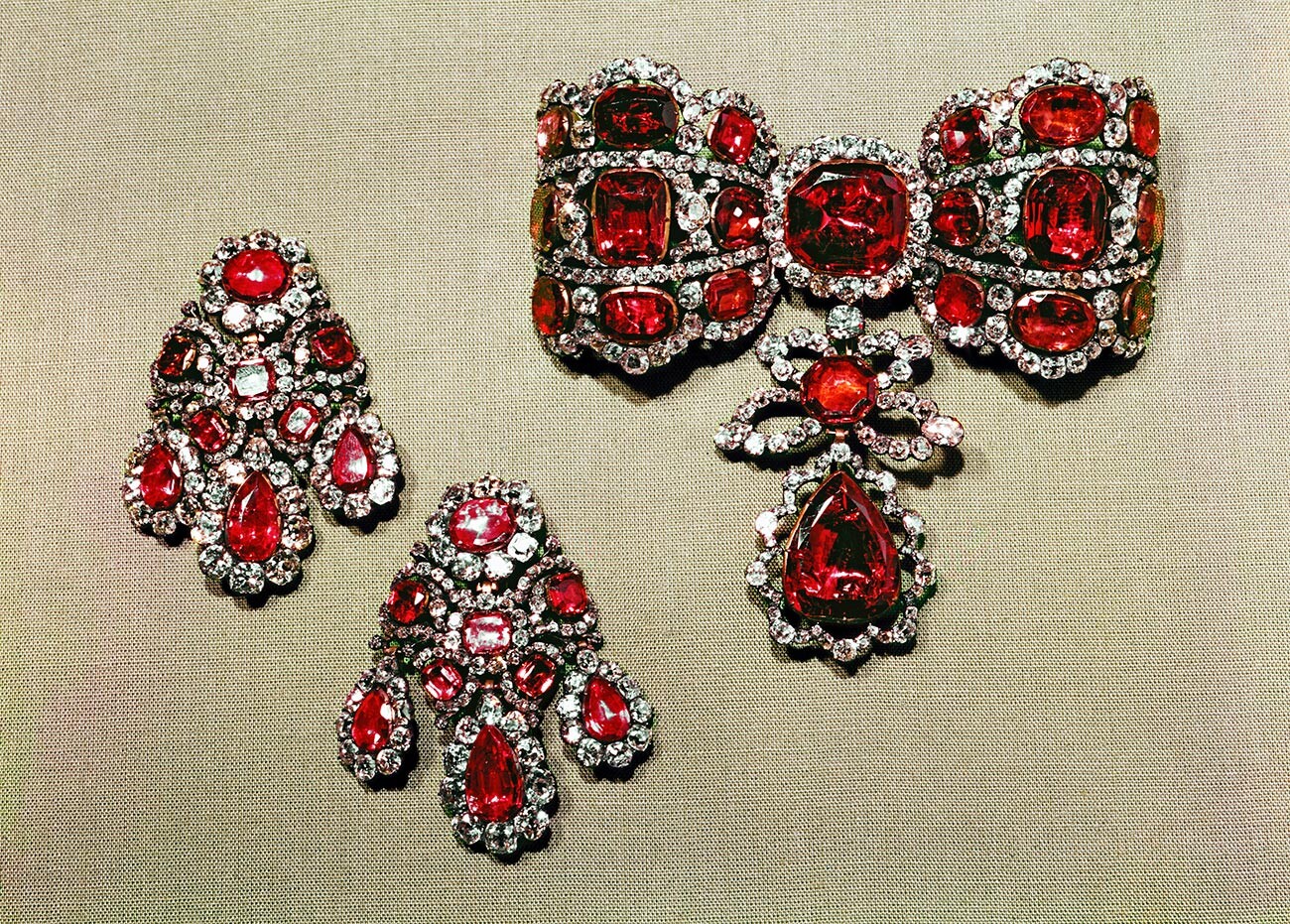
Catherine the Great's diamond esclavage bow and girandole earrings.
Pavlov/Sputnik
In Soviet times, spinel mines were discovered in Yakutia, the Urals and around Baikal. It should be noted that they're often found in close proximity to precious rubies and sapphires. Spinels are currently not industrially mined in Russia.
7. Topaz
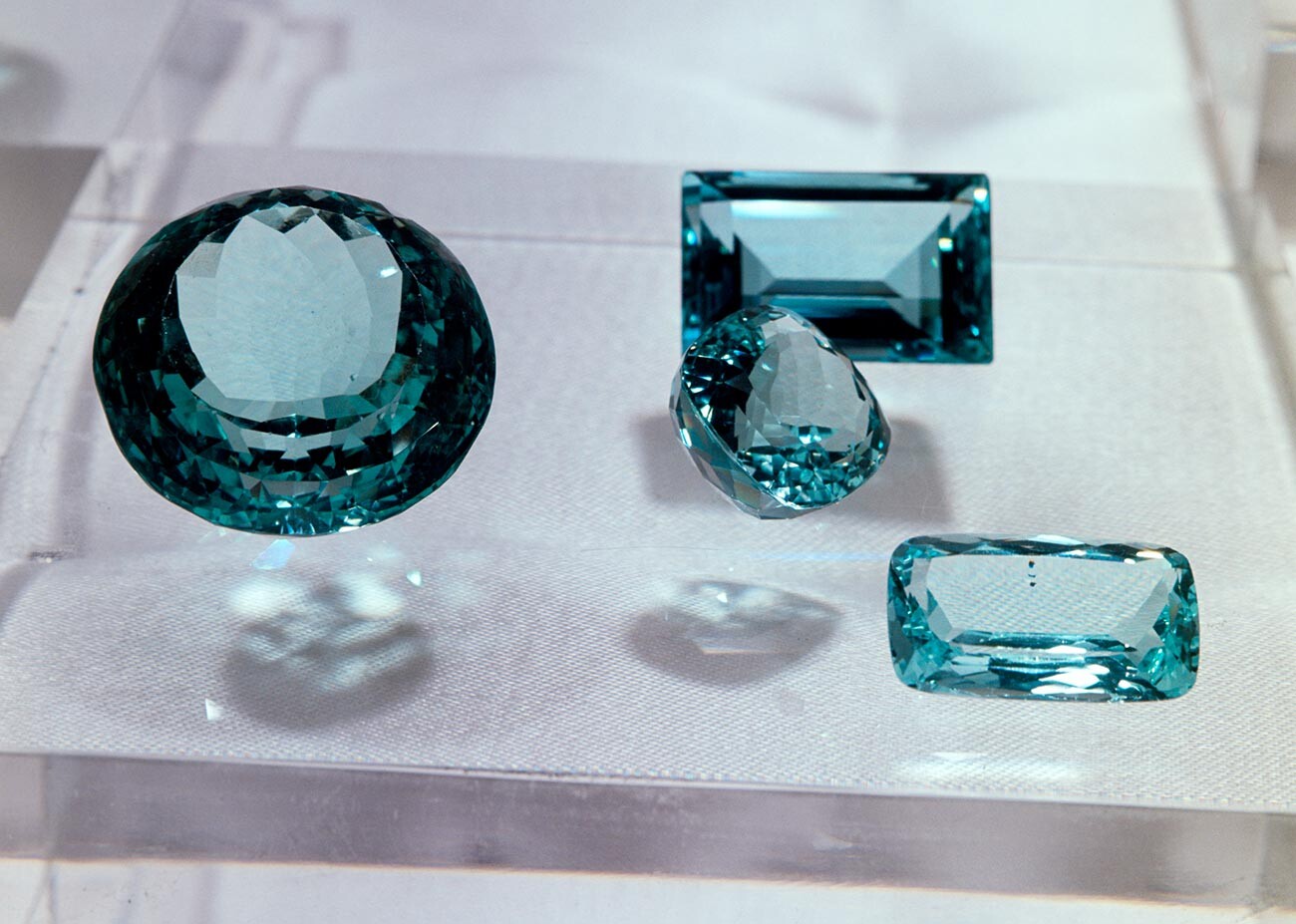
Urals topazes.
Sputnik
Semi-precious Ural topazes come in many shades - including sky-blue, smokey and all shades of yellow and orange. They're frequently found in the Ilmen nature reserve in the southern part of the region. Real heavyweights are often found, some weighing up to 30 kg. Russian topazes were always popular jewelry stones both inside and outside Russia, having been popular since the early 19th century.
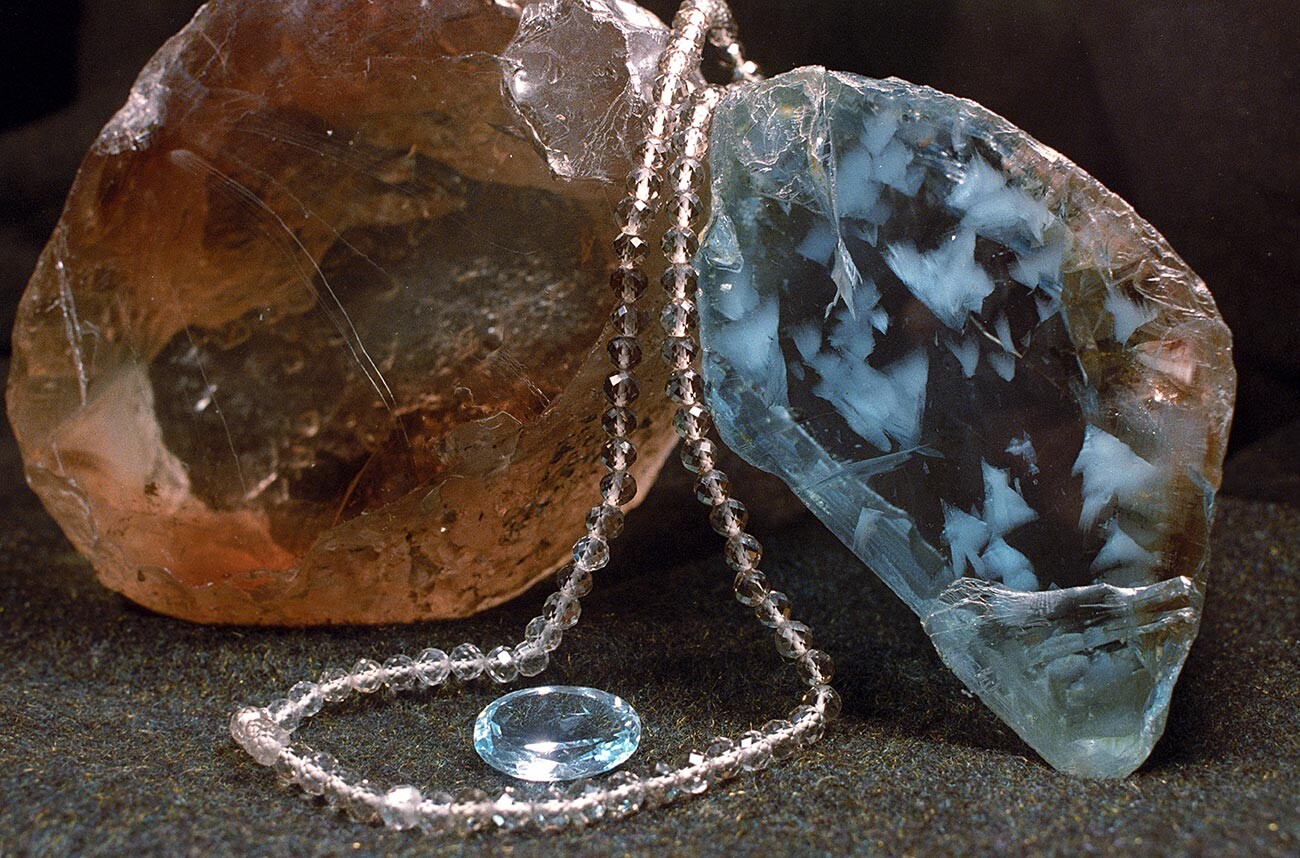
Sergei Subbotin/Sputnik
Dear readers,
Our website and social media accounts are under threat of being restricted or banned, due to the current circumstances. So, to keep up with our latest content, simply do the following:
- Subscribe to our Telegram channel
- Subscribe to our weekly email newsletter
- Enable push notifications on our website
- Install a VPN service on your computer and/or phone to have access to our website, even if it is blocked in your country
 Share
Share
 Tweet
Tweet
 Share
Share
 Flip
Flip
 Email
Email
Watch latest videos
Subscribe and Follow
Get a daily dose of Brazil Sun news through our daily email, its complimentary and keeps you fully up to date with world and business news as well.
News RELEASES
Publish news of your business, community or sports group, personnel appointments, major event and more by submitting a news release to Brazil Sun.
More InformationSouth America
SectionIndian women's hockey team leaves for European leg of FIH Pro League 2024-25
Bengaluru (Karnataka) [India], May 28 (ANI): The Indian women's hockey team departed from Bengaluru's Kempegowda International Airport...
Column: Trade wars and double standards -- Crisis of multilateralism in a divided global economy
Developing countries, empowered by their growing economic influence, are poised to improve global trade rules toward more balanced...
Indian Junior Women's Hockey team edge past Argentina 2-0 in shootout at Four Nations Tournament
Rosario [Argentina], May 28 (ANI): The Indian Junior Women's Hockey Team clinched a hard-fought 2-0 win in the shootout against hosts...
Guyana affirms support against terrorism to All-Party Delegation led by Shashi Tharoor
Georgetown [Guyana], May 28 (ANI): The All-Party Indian Parliamentary Delegation led by Shashi Tharoor was conveyed of Guyana's support...
Interview: BRI accession a historic step for Colombia -- expert
Making the most of the BRI could help transform Colombia into a regional player -- one that serves as a logistics hub and harnesses...
"Great honour": Vishva Vidya Gurukulam founder Jonas Masetti expresses gratitude on being conferred with Padma Shri award
New Delhi [India], May 28 (ANI): Jonas Masetti, founder of Vishva Vidya Gurukulam in Brazil, expressed gratitude to the Indian government...
Business
SectionMcDonald’s to shut down CosMc’s drink spinoff after short run
CHICAGO, Illinois: McDonald's is closing its experimental beverage spinoff, CosMc's, less than two years after launching the standalone...
China’s Lenovo profit plunges 64%, misses estimates sharply
BEIJING, China: China's Lenovo reported a steep 64 percent drop in fourth-quarter profit, falling significantly short of analyst expectations...
Economic data gives welcome relief to Wall Street
NEW YORK, New York - Strong economic data jump-started U.S. stocks and the dollar Tuesday, a welcome reprieve after weeks of pressure...
PepsiCo cleared in FTC case over Walmart discounts
NEW YORK CITY, New York: This week, the U.S. Federal Trade Commission (FTC) dropped its lawsuit against PepsiCo, which had accused...
Builder discounts drive sales spike, but housing outlook wary
WASHINGTON, D.C.: New single-family home sales in the U.S. rose sharply in April to their highest level in over three years as builders...
CEO says health push weakened Nestle, vows return to F&B roots
VEVEY, Switzerland: Nestle is realigning its focus on its core food and beverage operations after expanding into areas like health...


